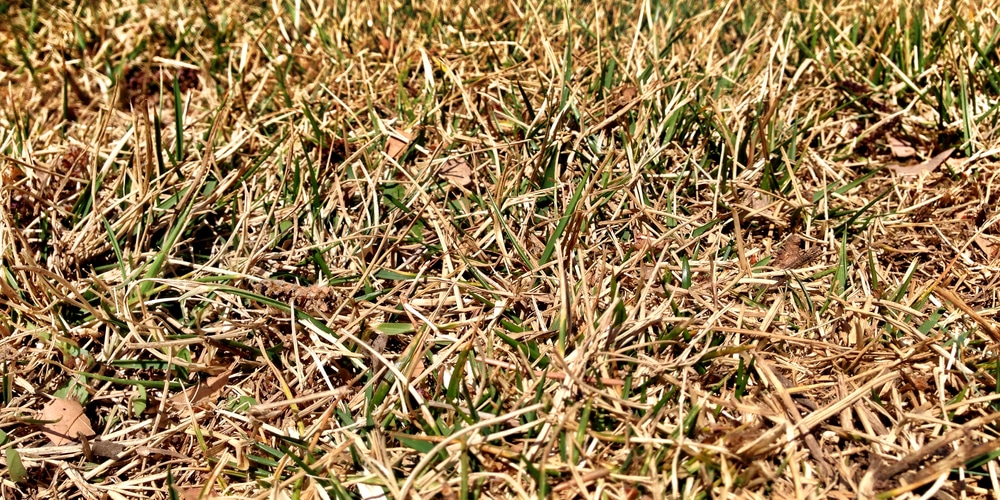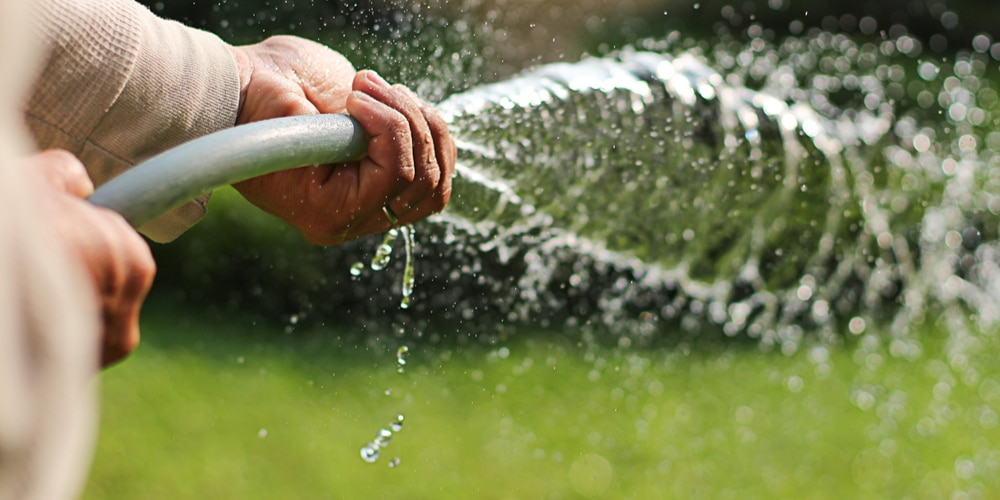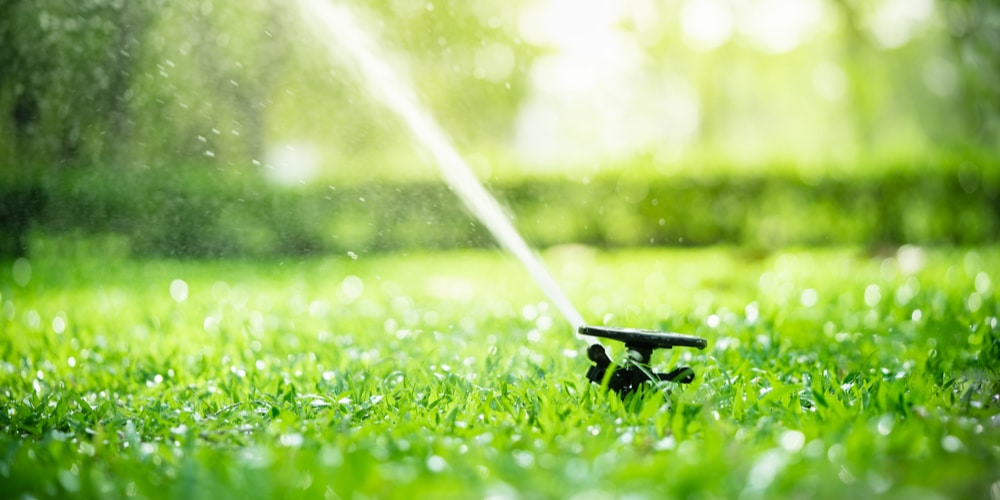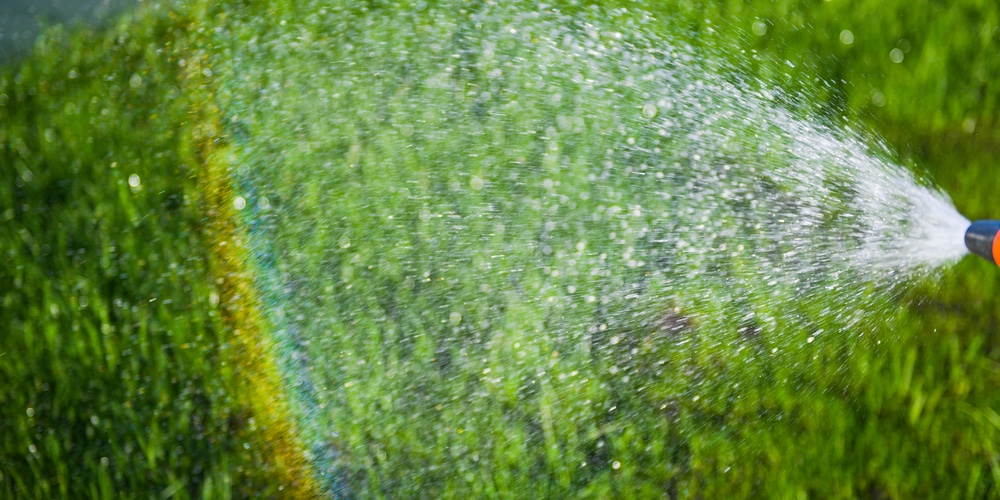Watering your lawn in Texas can be a tricky business. You want to make sure that you are doing it at the right time, or you could end up with brown patches and dead grass. In this blog post, we will discuss the best time to water your grass in Texas to keep it looking healthy and green!
Drought Conditions In Texas

Drought conditions have become more common in Texas in recent years. While the causes of this trend are not fully understood, scientists believe that a combination of factors, including climate change, maybe blamed. Whatever the reason, the effects of drought are apparent.
With less water available, farmers have to irrigate their crops more often, leading to lower yields. In addition, drought can cause wildfires to spread more quickly and damage infrastructure.
As a result, Texans must be prepared to confront the challenges of drought conditions. One way to do this is to conserve water whenever possible. This includes something as simple as turning off the faucet while brushing your teeth.
You definitely don’t want to miss a day of watering your grass seed in TX if there’s a drought.
Every little bit helps, and by working together, Texans can help mitigate the effects of drought.
Best time to water grass in texas
Anyone who has lived in Texas knows that the weather here can be extreme. Summertime temperatures often soar into the triple digits, and the humidity can be oppressive.
As a result, lawns here need to be properly watered to stay healthy. However, water is a precious resource, and it’s essential to use it wisely. That’s why it’s important to follow some basic principles of lawn water management.
First, water early in the morning or evening when cooler outside. This will help to minimize evaporation. Second, make sure to water deeply but less frequently. Watering deeply encourages roots to grow deeper into the soil, making your lawn more drought-resistant.
Finally, don’t forget to check for signs of runoff or overspray. By following these simple tips, you can help your lawn stay green and healthy all summer long while also being good stewards of our most precious resource.
Benefits Having Lawn Water Management
Most people think that lawn irrigation is about maintaining a green, healthy lawn.
However, lawn irrigation can also have some significant environmental benefits. Proper lawn irrigation can help to reduce water usage, minimize runoff and erosion, and improve water quality.
Water usage is always a concern, especially with limited water resources. Using targeted watering methods, such as drip irrigation or soaker hoses, you can minimize evaporation and ensure that your plants get the moisture they need without wasting water.
Overwatering is wasteful, but it can also lead to runoff, which can carry pollutants into storm drains and waterways. By using less water, you can help to protect our natural resources.
In addition to reducing water usage, proper lawn irrigation can also help to minimize runoff and erosion. When rain falls on bare soil, it can quickly wash away vital topsoil, causing erosion and leaving your plants vulnerable to root damage.
However, when rain falls on a grassy surface, grass blades help slow the flow of water and allow the soil to absorb the moisture before it runs off. This helps to reduce erosion and keep your soil healthy.
Finally, proper lawn irrigation can also improve water quality. When water runs off bare soil, it can pick up pollutants like fertilizers, herbicides, and pesticides. These pollutants can then end up in our lakes, rivers, and streams, where they can damage aquatic ecosystems.
By watering your lawn with a soaker hose or drip irrigation system, you can help to keep these harmful chemicals out of our waterways.
Tips For Conserving Water
As we’ve mentioned, water is a precious resource, and it’s essential to use it wisely. Here are a few tips to help you conserve water in your lawn management:
- Use a rain barrel or other catchment system to collect rainfall to water your lawn.
- Install a drip irrigation system or soaker hose to water your lawn more efficiently.
- Mulch your lawn to help retain moisture.
- Choose drought-resistant grasses and plants for your landscape.
Xeriscaping
If you’re looking for a more drought-resistant lawn, you may want to consider xeriscaping. Xeriscaping is a type of landscaping that uses native plants adapted to the local climate. This means that they require less water and maintenance than traditional lawns. In addition, xeriscaped yards can be just as beautiful as lawns, and they can provide valuable habitat for local wildlife.
If you’re interested in xeriscaping your yard, keep a few things in mind. First, you’ll need to select plants native to Texas to thrive in your particular climate. Second, you’ll need to design your yard to minimize the amount of lawn area. And finally, you’ll need to make sure that your irrigation system is properly designed and installed.
Best time to water grass in Texas: Conclusion
Watering your lawn in Texas can be challenging, but it is possible to have a healthy and green lawn with some planning and effort.
By following the tips in this blog post, you can conserve water and keep your landscape looking beautiful. You can also regularly fertilize your lawn.
Related Article: The Best Way to Water Grass Without A Sprinkler System?


